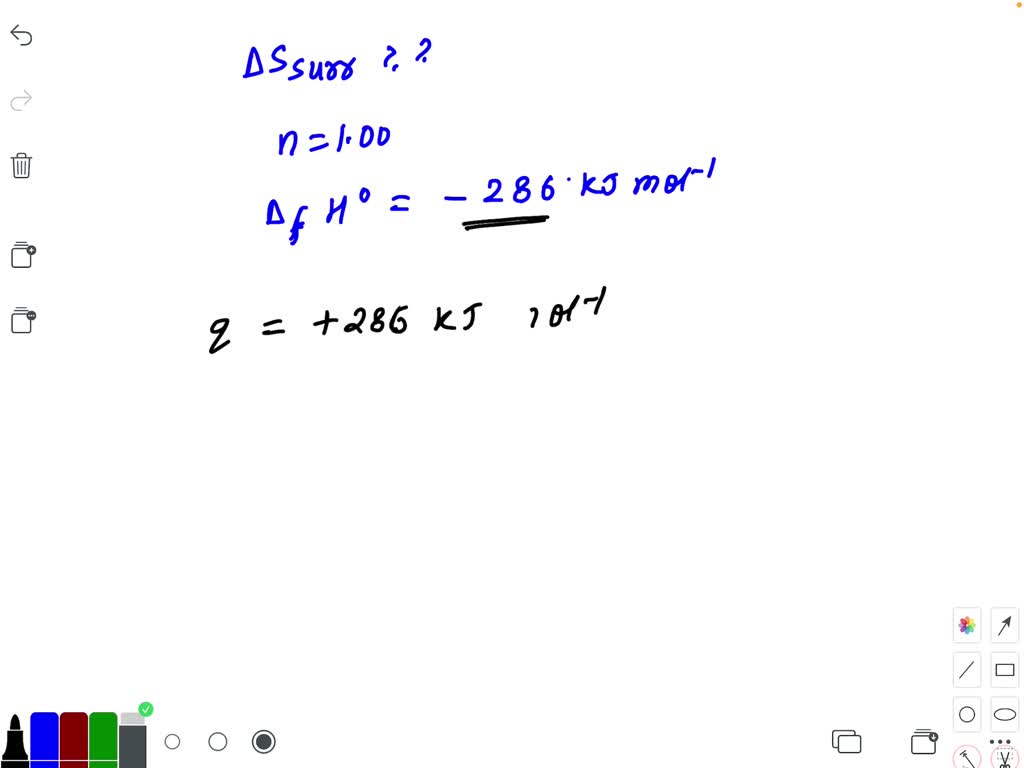

Because entropy is a state function, the change in the entropy of the system that accompanies any process can be calculated by subtracting the initial value of the. ∆ S total = ∆ S system + ∆ S surroundings Entropy and the Second Law of Thermodynamics. So if we want to predict the direction of a chemical reaction we must take account of the total entropy change of the system and the surroundings, and that includes the effect on entropy of any heat change from the system to the surroundings (or in the other direction, heat taken in from surroundings to system). So the total entropy change (of the Universe, ie system + surroundings) brought about by the reaction is +307 J K ‑1 mol -1. Solution: G i v e n v a l u e s: n 3, C p 2.5 R, T 1 300 K, T 2 600 K C v C p R 2.5 R R 1.5 R (a) Change. For an ideal gas C p 2.5R, calculate the change in entropy when 3 moles of this gas is heated from 300 K to 600 K at: (a) Constant pressure (b) Constant volume. ∆ S surroundings = 591 J K -1 mol -1, more than enough to outweigh the value of ∆S system of –284 J K ‑1 mol -1. Thermodynamics Questions based on Entropy. the same amount of energy dumped into the surroundings will make more difference at lower temperature – this rationalises the ‘division by T’įor the ammonia / hydrogen chloride reaction at 298 K:.the more negative the value of ∆ H, the more positive the entropy increase of the surroundings.the negative sign means that an exothermic reaction (∆ H is negative, heat given out) produces an increase in the entropy of the surroundings.The formal derivation is complex but leads to the expression ∆ S of the surroundings (∆ S surroundings) = –∆ H / T. But how can we evaluate the entropy change caused by ‘dumping’ 176 kJ mol -1 of heat energy into the surroundings? (Notice that this is 176 000 J mol -1.) It must be positive as more quanta of energy lead to more possible arrangements and it must be more than 284 J K -1 mol -1.

It is negative as we have calculated (and predicted from the reaction being two gases going to a solid). As we have seen above, the entropy change of the ammonia / hydrogen chloride reaction (‘the system’) is –284 J K -1 mol -1.


 0 kommentar(er)
0 kommentar(er)
